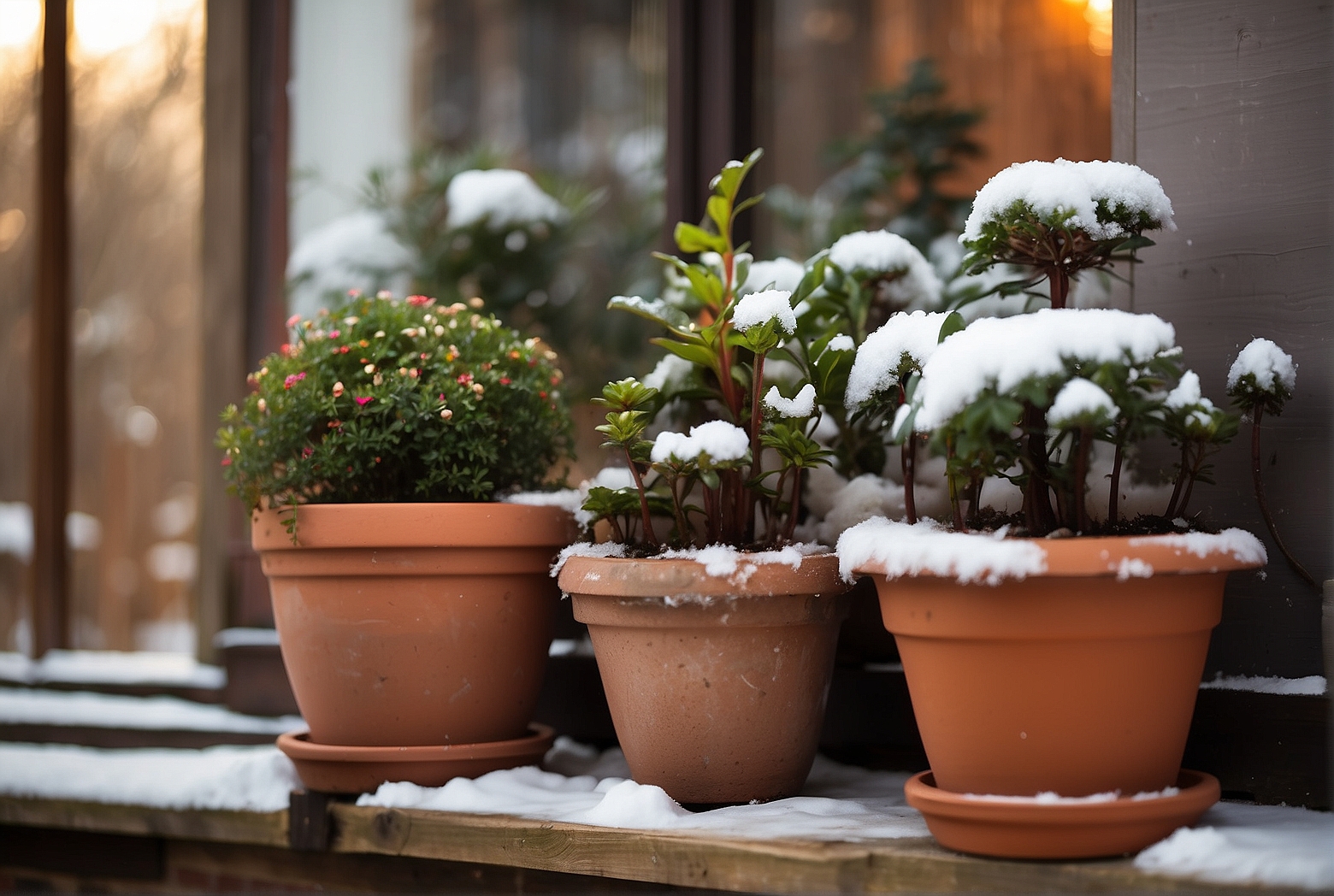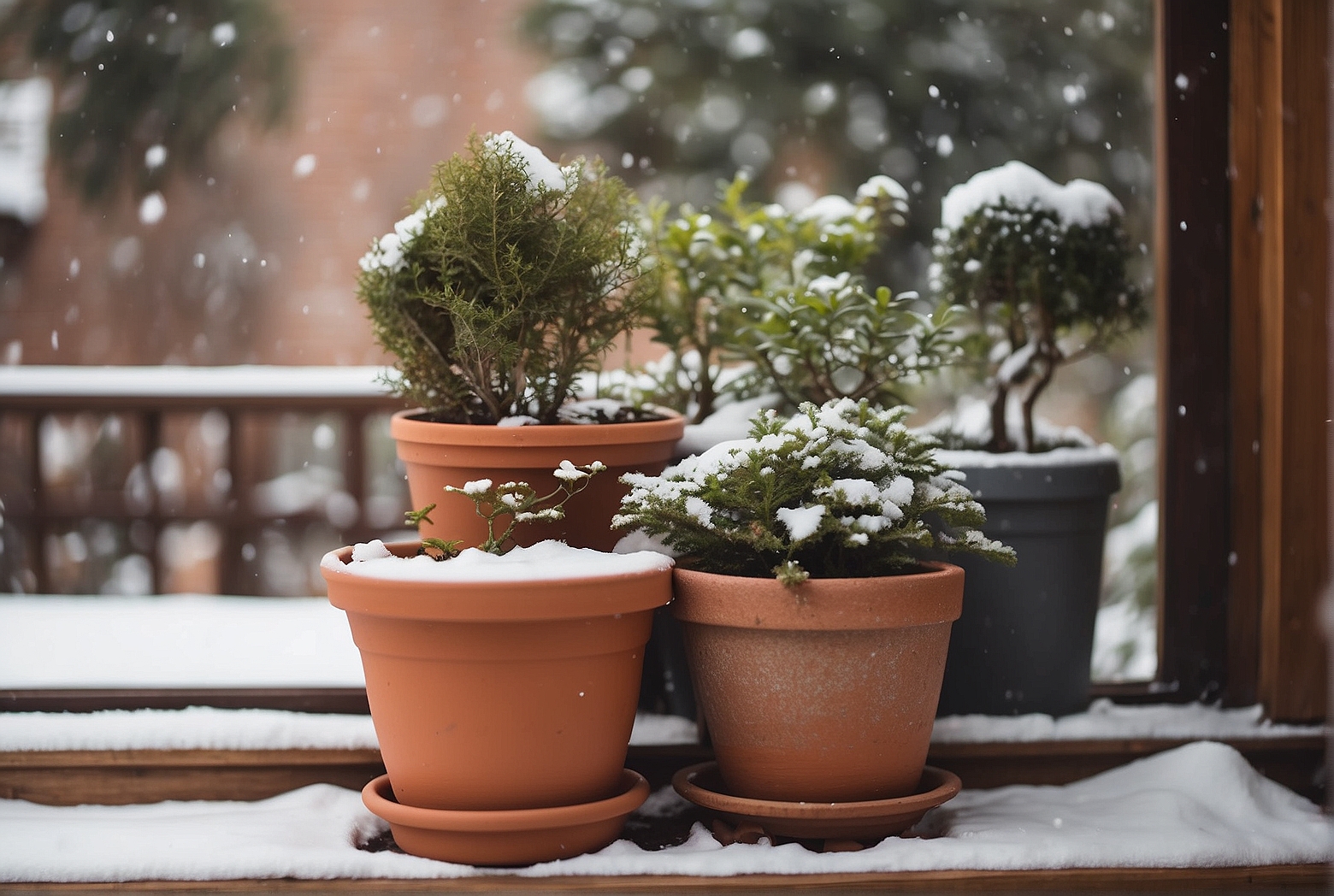Winter can be a challenging time for potted plants. With colder temperatures and shorter days, knowing how to care for your plants during these months is crucial. Fortunately, there are several simple steps you can take to ensure your potted plants remain healthy and happy. In this article, we will discuss essential tips for winter plant care, including how to protect them from the cold, proper watering techniques, and how to provide necessary nutrients. With the right care, your potted plants can survive winter and thrive in the spring.
Protecting Your Potted Plants During Winter
Winter’s cold temperatures and reduced sunlight can stress potted plants. Here are steps to protect them:
- Move Plants Indoors: Before the cold weather sets in, bring your potted plants indoors. If this is not possible, wrap them in burlap or plastic to insulate against the cold.
- Regular Watering: Water your plants regularly to keep the soil moist, but avoid overwatering, which can lead to root rot.
- Provide Adequate Light: Place plants where they can receive ample sunlight. If natural light is insufficient, use grow lights.
- Fertilize Regularly: Use a balanced fertilizer to ensure your plants receive necessary nutrients during the winter.
By following these steps, you can help your potted plants endure winter conditions and stay healthy.
Tips for Overwintering Potted Plants Indoors
- Choose Hardy Plants: Select plants that can tolerate lower light levels and cooler temperatures.
- Provide Light: Place plants near a sunny window or use artificial lighting if needed.
- Monitor Temperature: Keep plants away from cold drafts and heat sources. Ideal temperatures are between 65-75°F.
- Water Sparingly: Water when the top inch of soil is dry, as plants need less water in winter.
- Prune and Fertilize: Remove dead leaves and stems, and fertilize every few weeks with a balanced fertilizer.
- Check for Pests: Inspect regularly for pests and treat promptly if found.
- Repot if Necessary: Repot plants in larger containers with fresh soil if they outgrow their pots.
- Gradual Outdoor Transition: Move plants outdoors gradually in spring to acclimate them to the new environment.
The Benefits of Moving Potted Plants Indoors for Winter
Bringing potted plants indoors offers several advantages:
- Protection from Cold: Indoor environments shield plants from freezing temperatures, preventing root damage and death.
- Extended Lifespan: Indoor conditions reduce stress from cold, allowing plants to continue growing and thriving.
- Pest and Disease Prevention: Indoors, plants are less exposed to pests and diseases common in colder weather.
Overall, moving potted plants indoors for winter can protect them from the cold, extend their lifespan, and keep them safe from pests and diseases, ensuring they remain healthy throughout the season.

FAQs
1. Should I bring my potted plants indoors for the winter?
Yes, bringing potted plants indoors is the best way to protect them from cold temperatures and harsh weather conditions.
2. How should I care for my potted plants during the winter?
Water less frequently, provide adequate light, and keep them in a location free from cold drafts. Ensure they have the necessary nutrients by using a balanced fertilizer designed for winter use.
3. Can I fertilize my potted plants during the winter?
Yes, use a fertilizer specifically designed for winter to ensure your plants get the nutrients they need.
Conclusion
Caring for potted plants in winter requires special attention to protect them from cold temperatures and ensure they receive adequate light and nutrients. By moving them indoors, watering sparingly, and monitoring their environment, you can help your plants survive the winter and thrive in the spring. Proper winter care can make all the difference in maintaining healthy and vibrant potted plants year-round.

